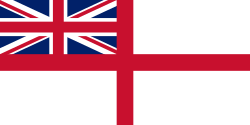History
The division evolved out the earlier Anti-Submarine Committee set up in 1910, [2] that coordinated the Admiralty's earliest anti-submarine warfare proposals sent for consideration by the Board of Admiralty. Further systematic assessments and experimentation would take place from 1911 until 1915 when the Board of Invention and Research was established.
Efforts were made throughout the First World War to search for a system of countering submarine attacks. Offensive and defensive measures were assessed and sometimes implemented, with different degrees of achievement. However the losses caused by the U-boats in their campaign of unrestricted warfare did have a demoralising effect on national morale [3] leaving the government with no other choice but to be prepared to consider almost every proposal to find, monitor, eliminate, and neutralise, all undersea threats. In December 1916 the division was created following a merger between the Intelligence Operations Division the Anti-Submarine Committee. [4] [5] The division would also take over the previous anti-submarine and minesweeping operations duties, conducted by the Operations Division.
By 1920 the navy established an Admiralty Research Laboratory specifically to test and evaluate new anti-submarine technologies. During the interwar-years the division was scaled down however by the advent of a second world war it would be expanded again. The division would go through a number of name changes during its existence such as the Anti-Submarine and Warfare Division [6] (1939–43), Anti-U Boat Division [7] (1943–45), Torpedo, Anti-Submarine and Minewarfare Division, [8] (1945–50) and finally Undersurface Warfare Division, [9] (1950–64). Post the abolishing of the Admiralty, the Ministry of Defence would continue anti-submarine operations.
Responsibilities
When the division's was created, most weapons available to navy to counter submarine warfare had been put in place, but were often ineffective. Initially the majority of anti-submarine work was being conducted by the Auxiliary Patrol who was also engaged in operational seek and destroy tasks.
The Anti-Submarine Warfare Division synced its activities with that of the Minesweeping Division since it also dealt with the other under-water threat that of mining conducted by the enemy. This required large numbers of small anti-submarine vessels similar in some aspects to those employed on minesweeping.
Many of these small type of vessels were built and were equipped for both types of duty (AS) and (MS). At the start of world war one many trawlers were requisitioned, then were converted for these types of tasks, each civilian port, and naval base had its own allocation of ships for local coastal defence work.
When major attacks had occurred they were reported back to an assessment center who would then study the results very carefully, the centre would be chaired by the Director of Anti- Submarine Warfare, in order that the conclusions reached may be as accurate as possible. The assessment centre would then try to predict possible trends, but this was dependent on the success of countermeasures deployed to achieve the destruction of enemy's U-boats. The reports produced by the division became extremely important planning documents.
The division was also responsible for evaluating suggestions, from any source in relation to new methodologies and devices that might warrant further development or deployment afloat any opinions that were mainly scientific would be sent to the Board of Invention and Research for further investigation.
This page is based on this
Wikipedia article Text is available under the
CC BY-SA 4.0 license; additional terms may apply.
Images, videos and audio are available under their respective licenses.
